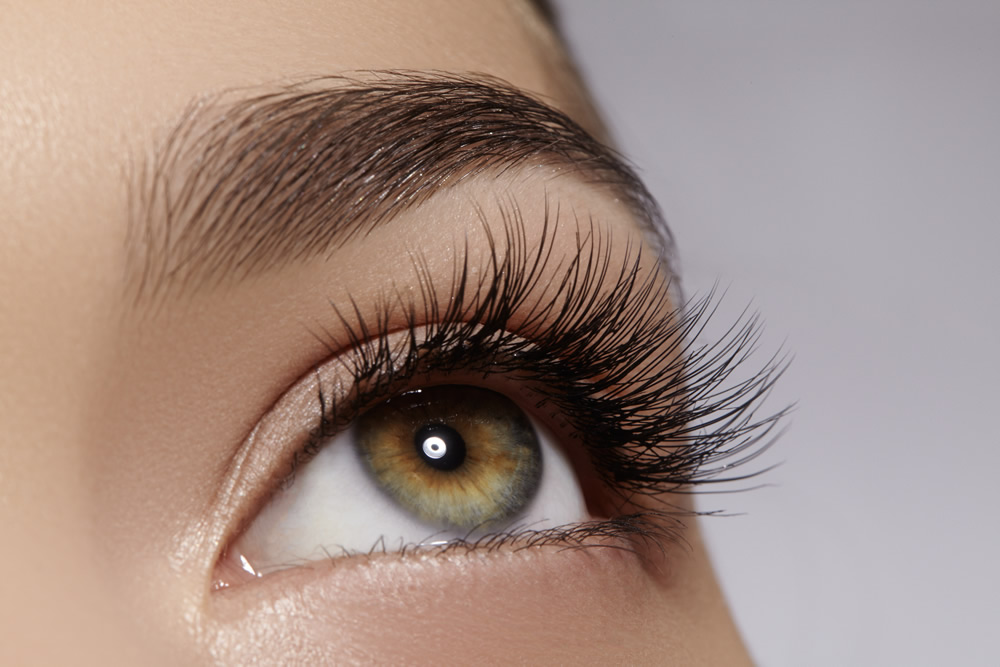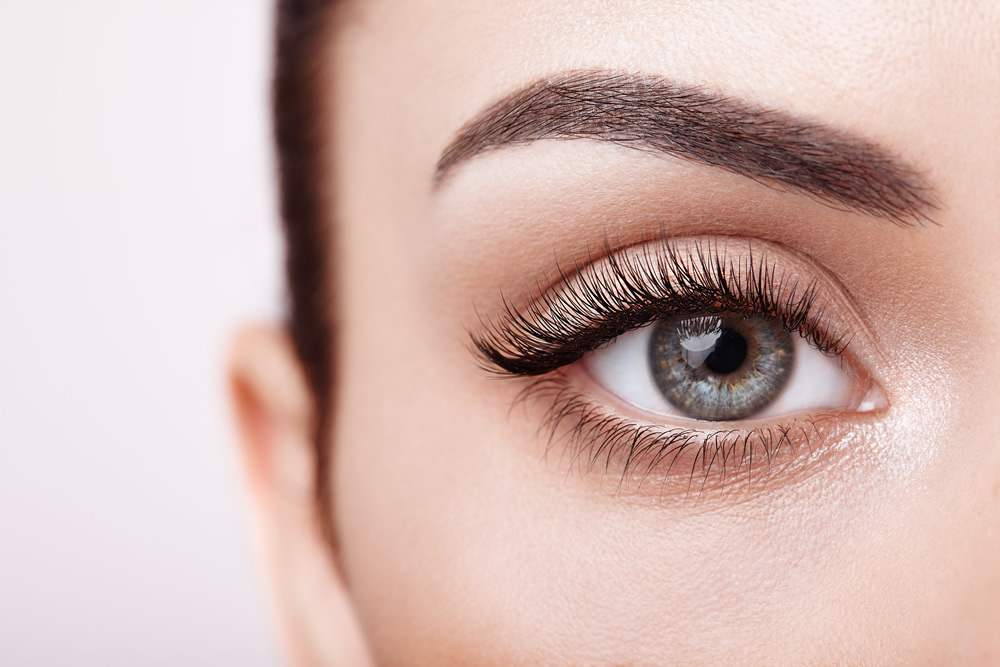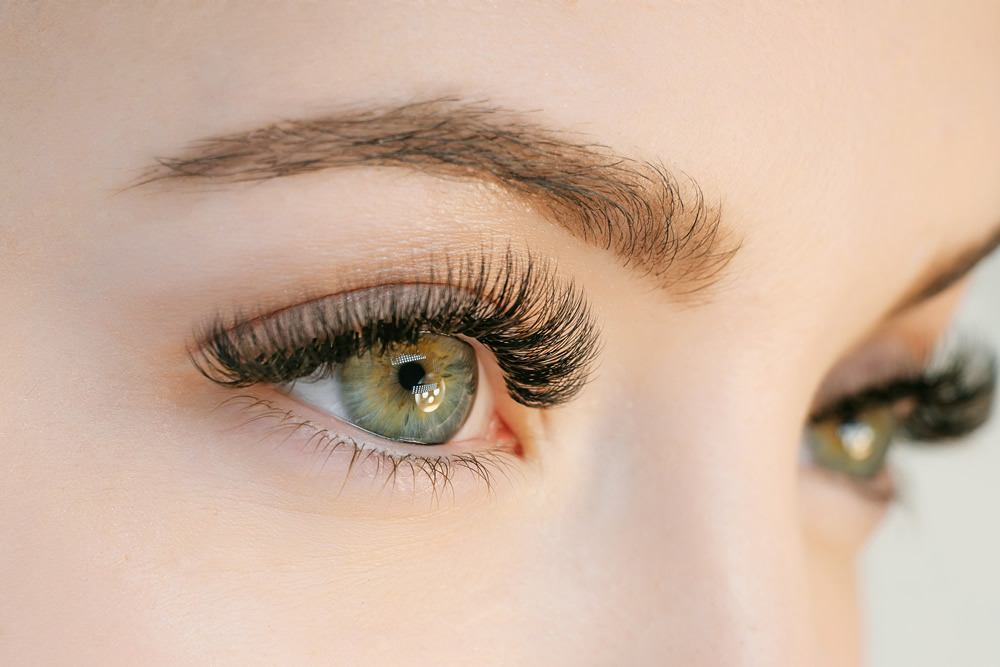LATISSE® for Longer Eyelashes

For those who are tired of applying coats of dark mascara day after day, Latisse offers a welcome reprieve. Latisse is an FDA-approved treatment for eyelash growth. In fact, it’s the only treatment that’s scientifically proven to develop develop thicker, longer lashes. Latisse is an amazing option for patients who are frustrated by inadequate or insufficient eyelashes (hypotrichosis).
The lash-growth effects of Latisse were actually discovered as a side effect from bimatoprost, also known as Lumigan. Lumigan, produced by the makers of Botox (Allergan), is prescribed by ophthalmologists in the form of eyedrops to treat patients with glaucoma by lowering intraocular pressure. Patients who were using Lumigan experienced additional eyelash growth and thus, Latisse was developed as a topical application to treat hypotrichosis, the first in the world of dermatology to safely do so.
If you’re frustrated by the appearance of your eyelashes, and want lushes lashes, board-certified dermatologist Dr. Michele Green is here to help. Dr. Michele Green is an expert in NYC in cosmetic dermatology, and was one of the first dermatologists to treat various aspects of hair loss and hypotrichosis. With over 25 years of experience in cosmetic procedures such as Botox, Juvederm, laser resurfacing, skin tightening, and hair loss, Dr. Green is one of the most qualified dermatologists in New York.
How does Latisse work?
LATISSE® is believed to work by extending the length of time that eyelash hairs stay in the growth phase and by increasing the number of eyelash hairs that are in the growth phase. This means that as your existing eyelash hairs are replaced with new eyelash hairs, you’ll see thicker, longer, and darker eyelashes. However, LATISSE® will not affect your existing eyelash hair growth, so you may continue to use mascara during your treatment until your new thicker and more luxurious eyelashes grow out.
LATISSE (bimatoprost ophthalmic solution) is FDA approved to lengthen, darken, and thicken, your eyelashes. Visible improvement in the appearance of the eyelashes will occur gradually as your new lashes come in. In the clinical trial leading to FDA approval, the majority of users saw a significant improvement in eyelashes within two months, with optimum improvement occurring after four months of use.
What is Latisse used for?
Latisse is a safe and effective way to improve eyelash hair growth over the course of several months when it’s applied to the upper eyelid treatment area. According to current study, it’s effective in patients with thinning eyelashes due to a number of causes, including chemotherapy-induced eyelash hypotrichosis. However, current study on whether Latisse is effective for those with certain medical conditions, such as alopecia areata, is inconclusive.

Does Latisse work on eyebrows?
The answer to can Latisse be used on eyebrows is somewhat mixed. Though Latisse is not FDA-approved for use on eyebrows, recent clinical studies have suggested that Latisse can help with eyebrow hair growth, with patients indicating hair growth after six weeks of daily application without any adverse effects. According to a study in Dermatologic Surgery, the most common potential side effect is that of discoloration or the darkening eyebrow hairs, along with a risk of itching skin.
How to Apply Latisse
Using Latisse is quite easy, and is a treatment you can apply in the privacy of your own home rather than at our office. Each night, after removing makeup, taking out any contact lenses, and washing your face, simply place one drop of Latisse solution on the enclosed sterile applicator. Next, draw the applicator carefully across the skin of the upper eyelid at the base of the eyelashes. Pass the applicator from the inner part of your lash line to the outer part, and then blot any excess solution beyond the eyelid margin. Repeat for the opposite side.
Use one sterile applicator for each eye. Each treatment kit includes 60 sterile applicators, enough to last for one month. It’s important not to re-use these sterile applicators, as a second application using the same applicator can lead to an eye infection or allergic reaction. Latisse should not be applied to the lower eyelid or to the eye itself. If applied to the lower lid, Latisse is more likely to enter the eye, which can lead to lowered eye pressure, a higher risk fo darkened iris pigmentation (darkening the colored part of the eye), and can cause complications for those considering LASIK or other eye surgeries.
After you apply Latisse, you should wash your hands thoroughly. For those who use contact lenses, you can reinsert them 15 minutes after you’ve applied Latisse. Over the next month to two months, you’ll likely experience longer, thicker eyelashes. At this point, you can switch to using Latisse every other day to maintain your eyelash growth, though it’s still perfectly safe to use Latisse on a daily basis. If you accidentally skip a day of Latisse application, there’s no need to apply twice as much solution the next day. Simply continue with your normal daily applications for to further develop your thicker, darker lashes.
How long does it take for Latisse to work?
The success of Latisse continues to develop over the course of several months after initial application. For the majority of patients, thicker, longer, darker eyelashes will become more pronounced after around 1 month or 6 weeks. In general, patients see full results after 3-4 months of continued use.
Is Latisse Safe?
Latisse’s prostaglandin analog formulation is FDA-approved for eyelash growth and has very few adverse side effects associated with it. Latisse is contraindicated for certain patients, including those who have eye conditions like glaucoma, macular edema, or intraocular inflammation (uveitis). Additionally, Latisse is not recommended for those under the age of 18 or who are currently pregnant or breastfeeding. It’s particularly important to discuss your medical history with Dr. Green before beginning treatment with Latisse in order to avoid any harmful side effects. During this discussion, you should mention any interest in eye surgery, as well as if you are currently using IOP-lowering medications for ocular hypertension and/or glaucoma, as this may mean Latisse is not right for you.

Are there any Side Effects from Latisse?
There are a few common side effects that patients experience from using Latisse. These include eyelid skin darkening which is likely reversible, as well as eye redness and itchiness. In some cases, patients experience darker pigmentation or redness along the base of the eyelashes of the upper eyelid that can appear as if one is wearing eyeliner. If Latisse ends up in the eye, this can lead to a potential side effect of a darkened iris, which can mean that those with light-colored eyes (blue or green) may end up with permanently darker eyes (hazel eyes).
Where can I buy Latisse?
Latisse is an FDA-approved prescription medication that requires doctor approval in order to purchase. It’s important to note that Latisse is the only eyelash growth treatment of its kind, and that over-the-counter eyelash growth “serums” and treatments are not proven to be safe or effective. The best way to get Latisse is by talking with a board-certified medical professional. Dr. Green can work with you to discuss if Latisse is best for you, and to develop a treatment plan that helps with eyelash growth and any other cosmetic or dermatological concerns.
How can I get a Latisse Prescription?
When you meet with a board-certified dermatologist or ophthalmologist, they can determine if Latisse is right for you. Dr. Green practices the latest techniques at the forefront of skin care to help you look and feel like your best self, and will be able to assess if Latisse will work for you.
Who can prescribe Latisse?
Only board-certified medical professionals can prescribe Latisse. If you’re interested in using Latisse, your best step is to contact our NYC-based office to see if Latisse is right for you.
How much does Latisse cost?
The cost of Latisse varies depending on which pharmacy you go to, but the average cost ranges between $120-200 for a month-long supply. Many pharmacies offer coupons that can reduce the average retail price by up to 70%.

Is Latisse covered by insurance?
For most patients, treating insufficient eyelashes is considered a cosmetic treatment which means that, unfortunately, it is not commonly covered by insurance. However, if you are suffering from eyelash thinning due to a medical condition (such as chemotherapy-induced eyelash hypotrichosis), your Latisse prescription cost will likely be covered by insurance. The best way to ensure that your Latisse prescription will be covered is to contact your insurance company prior to treatment, and to talk with Dr. Green about any potential causes of eyelash loss.
If you’re tired of nearly invisible lashes, there’s finally a solution that can help. Contact us online today or call Dr. Green’s NYC office at 212-535-3088 to learn more about whether LATISSE® may be right for you.
 212-535-3088
212-535-3088